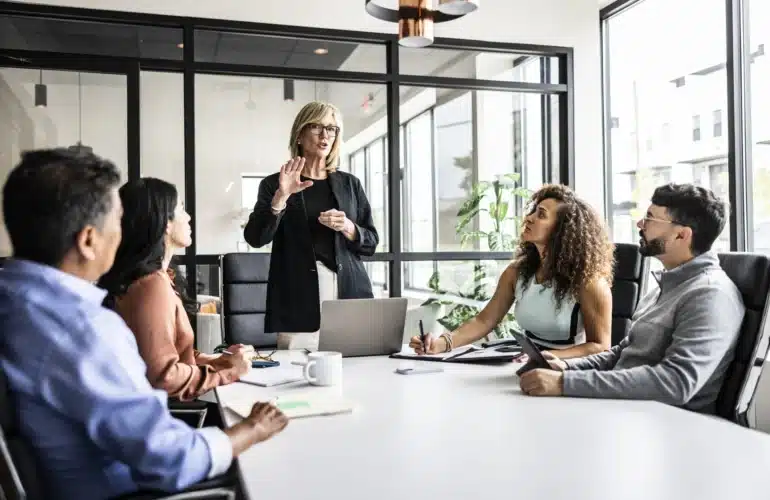Key Takeaways
- Employee engagement in the U.S. reached a decade-low of only 31% in 2024.
- AI tools are increasingly adopted in workplaces, with usage rising from 21% in 2023 to 40% in 2025.
- AI automates repetitive tasks, saving employees an average of 5.4% of their work time each week.
- Predictive analytics from AI can identify early signs of employee disengagement and help retain talent.
- AI transforms feedback and recognition processes, establishing a more connected and trusted workplace culture.
- Companies that effectively integrate AI show improved productivity, job satisfaction, and employee retention.
Employee engagement in the U.S. has hit a decade low, sparking concern among corporations across the nation. As traditional HR strategies falter, the savior emerges in the form of Artificial Intelligence (AI), promising not just improvement, but a paradigm shift in how businesses interact with their most valuable asset—their people.
A Downward Spiral: Employee Engagement at its Lowest
In 2024, statistics revealed an alarming drop in employee engagement across American businesses, with only 31% of employees reportedly engaged in their work. This figure echoes levels not seen since 2014, underscoring a pervasive disengagement crisis with consequential impacts on productivity, morale, and retention.
Enter AI: A Game Changer for the Workplace
The Rise of AI Adoption
Amidst this backdrop, AI emerges as a beacon of hope, with its adoption in workplaces climbing significantly—from 21% in 2023 to 40% in 2025. This surge is not merely a trend but a signal of AI’s tangible benefits in transforming workplace dynamics.
Automation and Efficiency
AI’s prowess in automating mundane tasks is a critical component of its appeal. By taking over repetitive tasks, AI frees up to 5.4% of employees’ weekly work time. This efficiency not only boosts productivity but also allows workers to focus on high-value activities, enhancing job satisfaction.
AI in Action: Driving Engagement and Retention
Predictive Analytics: The Crystal Ball for HR
One of AI’s most potent features is its ability to harness big data for predictive analytics. By identifying patterns that indicate disengagement, AI equips leaders with actionable insights that can prevent turnover. This predictive edge ensures that intervention strategies are timely and effective.
Feedback and Recognition: Building a Trusted Culture
AI-powered tools facilitate continuous feedback loops and personalized recognition, key factors in fostering a culture of trust and emotional investment. These tools streamline the recognition process, ensuring that employee contributions do not go unnoticed, thereby driving motivation and engagement.
Making AI Work: Strategies for Successful Integration
For organizations keen on leveraging AI, the challenge lies not just in adoption but effective integration. Companies that align AI with their broader engagement strategies realize enhanced productivity and morale. Here are steps for a seamless integration:
- Assessment and Planning:
- Conduct a comprehensive needs analysis to understand where AI can add the most value.
- Identify potential challenges and resources required for implementation.
- Phased Roll-Out:
- Start with pilot programs to test AI tools and gather feedback.
- Use insights from the pilot to refine and scale the integration.
- Training and Support:
- Invest in training programs to acclimate employees to new AI tools.
- Provide continuous support to address any issues and optimize use.
- Feedback Mechanisms:
- Establish clear channels for employee feedback on AI applications.
- Use feedback to make adjustments and improve user experience continually.
Toward a Future-Ready Workforce
The journey to revitalizing employee engagement is not just about solving today’s problems but preparing for tomorrow’s opportunities. AI, with its capacity for transformation, holds the key to unlocking new potentials, ensuring that employees are not merely workers but informed, valued, and motivated participants in their organization’s success.




